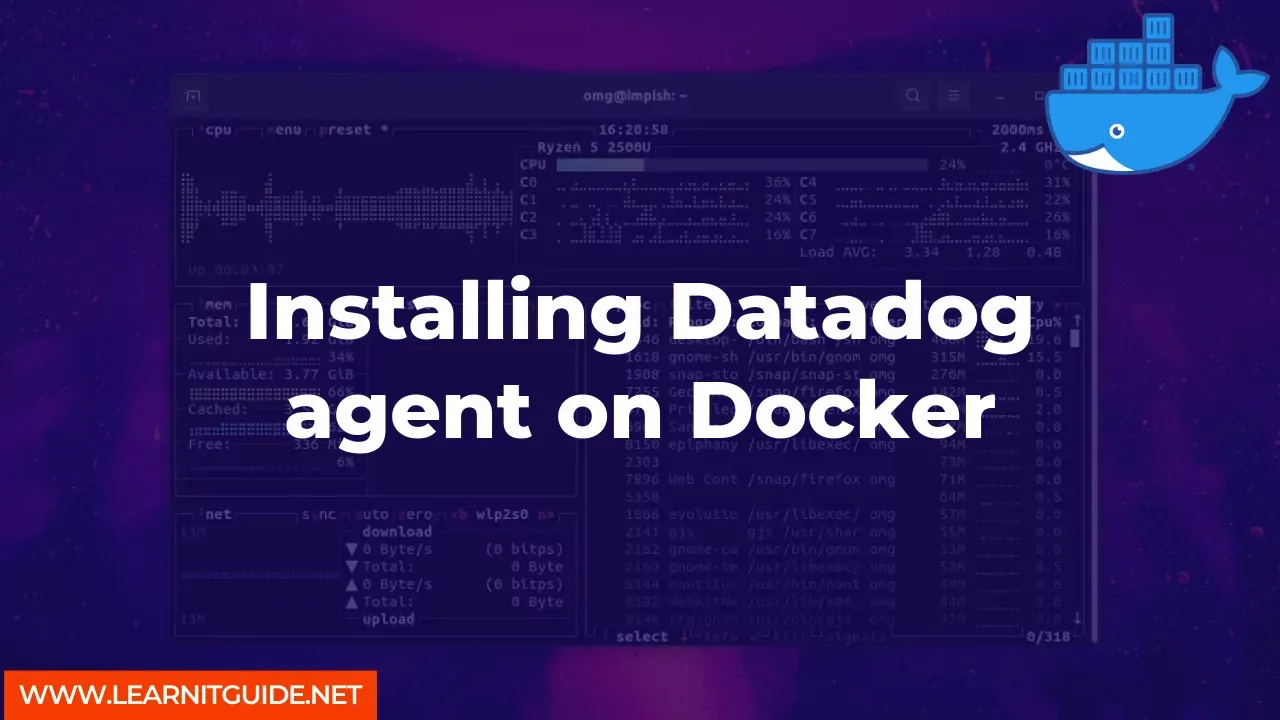In today's technology-driven world, monitoring applications and infrastructure has become crucial for businesses to ensure their systems are up and running efficiently. Datadog is a popular monitoring platform that enables businesses to monitor their applications and infrastructure in real-time. In this article, we will guide you through the process of installing Datadog agent on Docker.
Prerequisites:
Before we start with the installation process, make sure you have the following prerequisites:
- Docker installed on your system.
- A Datadog account.
Let's begin with the installation process.
Step 1: Create a Datadog API key
To begin with, you need to create a Datadog API key that will be used to authenticate the agent. To create an API key, log in to your Datadog account and navigate to the "Integrations" section. From there, click on "API" and then click on "Create API key."
Step 2: Run the Datadog agent container
To run the Datadog agent container, you need to execute the following command:
docker run -d --name datadog-agent \
-e DD_API_KEY=<YOUR_API_KEY> \
-v /var/run/docker.sock:/var/run/docker.sock:ro \
-v /proc/:/host/proc/:ro \
-v /sys/fs/cgroup/:/host/sys/fs/cgroup:ro \
-p 8126:8126/tcp \
-p 8125:8125/udp \
datadog/agent:latest
Here, replace <YOUR_API_KEY> with the API key that you created in Step 1. This command will download the Datadog agent container and start it with the necessary configurations.
Step 3: Verify the installation
To verify the installation, navigate to the Datadog dashboard and check if the agent is reporting metrics. You can also run the following command to check the status of the agent:
docker exec datadog-agent agent status
This command will display the status of the agent and the metrics that it is reporting.
Step 4: Instrument your application
Now that you have installed the Datadog agent, you can instrument your applications to send metrics to Datadog. To do this, you can use the Datadog API or one of the many integrations available.
For example, if you are using Python, you can use the Datadog Python library to send metrics to Datadog. Here is an example:
import datadog
datadog.initialize(api_key=<YOUR_API_KEY>)
datadog.statsd.increment('myapp.pageviews')
This code will send a metric named myapp.pageviews to Datadog.
In this article, we have covered the steps to install the Datadog agent on Docker and instrument your applications to send metrics to Datadog. By monitoring your applications and infrastructure with Datadog, you can identify issues and resolve them before they impact your business.
Related Searches and Questions asked:
That's it for this post. Keep practicing and have fun. Leave your comments if any.








0 Comments